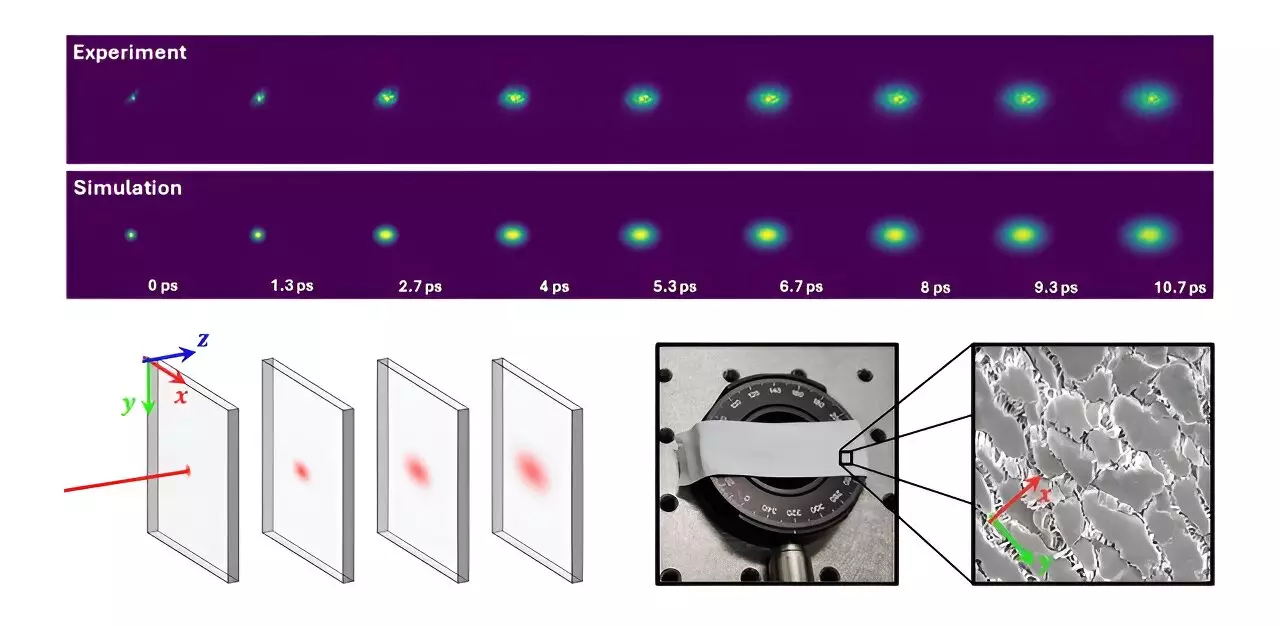The study of light interaction with materials is fundamental in a variety of scientific and industrial sectors, including but not limited to fields like medical imaging, materials science, and engineering. Despite the ubiquity of these applications, challenges persist, particularly when it comes to measuring how light scatters within anisotropic materials—those that exhibit directional variances in light behavior due to their internal structures. This scattering behavior complicates the process of accurately modeling and understanding the optical properties of such materials, leading to gaps in research legitimacy and reliability. Thus, the need for a method that can provide a comprehensive analysis of light behavior in anisotropic settings is paramount.
In a groundbreaking study published in *Advanced Photonics Nexus*, researchers from the European Laboratory for Nonlinear Spectroscopy (LENS) have introduced a method designed to overcome the limitations associated with evaluating anisotropic materials. By merging time-domain transmittance measurements with advanced Monte Carlo simulations, the research team has unveiled a sophisticated approach to traverse the convoluted landscape of light interaction within these substances. Their method is not just about gathering data; it’s about capturing the dynamics at play when light meets these complex materials.
The study’s focal point involved two prevalent anisotropic materials: Teflon tape, renowned for its extensive industrial application, and paper, noted for its inherent anisotropic structure derived from aligned cellulose fibers. The choice of these materials underscores the practical significance of the research, paving the way for real-world applications that extend beyond mere theoretical understanding.
Utilizing transient imaging techniques, the scientists managed to observe and document how the light patterns evolve in real-time during exposure to ultrashort light pulses. This detailed temporal data, when combined with their newly devised anisotropy-aware simulation method, illustrated the differential scattering behaviors along distinct axes within these materials. Prior to this breakthrough, the complex interactions within anisotropic materials remained poorly understood, often leading to oversimplifications in data analysis.
The significance of this research extends to the researchers’ ability to derive scattering tensor coefficients for the first time in such detail. This information serves as a critical benchmark for characterizing the optical properties of anisotropic materials. Moreover, their findings correspond closely with predictions made by advanced simulation models, reinforcing the validity of their approach.
Anisotropy in materials has traditionally been overlooked in many scientific studies, primarily due to the complexities involved. However, Dr. Lorenzo Pattelli from the Italian National Institute of Metrological Research (INRiM), the principal investigator of the study, stresses how neglecting anisotropic behaviors can lead to substantial inaccuracies in reported scattering coefficients. By showcasing this nuance, the study opens a broader conversation around methodological rigor in optical property assessment.
Dr. Pattelli stated, “Almost all scattering materials show some form of anisotropy. Yet, many studies have ignored this aspect, assuming materials are isotropic for simplicity.” This highlights a critical gap within the existing literature, as it reveals that failing to account for anisotropic characteristics can adversely affect scientific conclusions.
The successful implementation of this new technique not only enhances our understanding of light scattering in anisotropic materials but also heralds potential advancements in various practical applications, including medical diagnostics and material development. Improved characterization methodologies can facilitate better diagnostic techniques reliant on light scattering, thus propelling forward clinical practices and material science research.
With the advancements presented by this study, future research endeavors are expected to delve deeper into the optical properties of other structurally complex materials, paving the way for innovations across various domains. Researchers will now have the tools to refine their analyses, indicating that the study of anisotropic materials is far from an end; rather, it is the beginning of a new chapter in the pursuit of optical clarity and accuracy.

